International Flavor
Fall 2009

When the Chinese delegation arrives in Pittsburgh for the G-20 summit, you could greet them with, “Ni chi fan le mei yo?”—Mandarin literally meaning, “Have you eaten yet?”
The expression is really more of a polite salutation, much like “How are you?”
But if the visiting Chinese leaders were actually to take you up on the offer, our local neighborhoods have the broadest selection of authentic international dining options in the Pittsburgh area. In fact, you could dine out here for an entire week and take in the smells, textures, and tastes of a different foreign country at every meal. Many of the restaurateurs in the East End and the Fox Chapel area came here directly from overseas, or they are first- or second-generation Americans. Often it was a relative or friend who moved to the area first, providing them with a place to stay—and perhaps more importantly, a place to work.
Victor Chen is of Chinese descent and born in Korea. When he immigrated to the United States in 1989, he began working for his brother-in-law, Allen Tsang, who was running a Chinese restaurant in Shadyside with his brother, Jimmy Tsang. “I have only one job in America,” says a smiling Chen, who now owns the longtime favorite Jimmy Tsang’s Chines Restaurant with his wife, Amy.
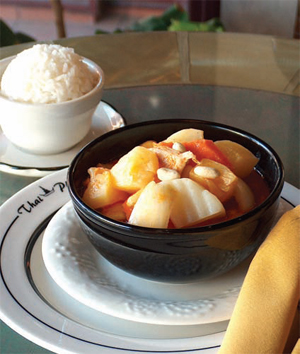
Many local restaurant owners worked in food service in their home countries before coming to the U.S. “In 1949, my father was on the last plane to flee to Taiwan,” says Jimmy Wan Jr., general manager and son of the owner of Jimmy Wan’s Restaurant and Lounge in O’Hara Township, recounting his family’s escape from Communist rule. “He and my grandfather then opened up a restaurant in Taipei,” Wan explains.
Others such as Santi Thamwiwat settled here in pursuit of higher education. Thamwiwat came from Thailand to study structural engineering and later worked for Westinghouse Electric’s nuclear division. His wife, Surin, earned her master’s degree in microbiology at the University of Pittsburgh and spent nearly 20 years doing cancer research.
The couple had never been in the restaurant business before, but Surin enjoyed cooking authentic Thai recipes she learned from her mother, who runs an eatery in northern Thailand. “Everyone loved it and asked, ‘Why don’t you open a restaurant because there are no Thai restaurants in Pittsburgh?’” Thamwiwat recalls. “So we opened our first restaurant on Walnut Street in 1988, and a lot of people came.”
Right: Thai Place
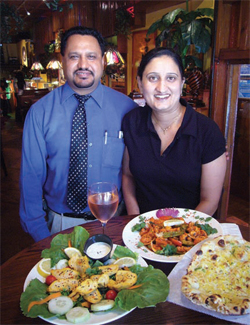
And they keep coming and coming—the everpopular Thai Place now has locations in O’Hara and Wexford, too.
Many other foreign-born chefs here attribute their interest in cooking to the countless hours spent in the kitchen at their mother’s side, as their culinary tradition was passed down from generation to generation.
“It’s just in me,” describes Norraset Nareedokmai, owner and executive chef for Bangkok Balcony and Silk Elephant Thai Tapas & Wine Bar, both in Squirrel Hill. “It was my mother teaching me cooking without my knowing it. She is a big influence on my cooking style, and a lot of our curries are influenced by her.”
estaurants like these help serve and sustain the increasingly diverse population associated with the area’s universities and hospitals.
“When I first came here in 1985 there weren’t too many international restaurants,” remembers Didar Singh, who traveled from India to see the 1984 Summer Olympics in Los Angeles and never returned.
“But some restaurants had a good business,” he adds. “So I thought maybe the reason is because there are a lot of international students at the universities, and they are looking fortheir own country’s food.” Now students—and non-students alike—line up seven days a week at Singh’s India Garden on Atwood Street in Oakland for lunch, dinner, and the happy hour and late night specials.
Gravitating toward one’s native food is only natural. “Chinese people come here because we serve real Chinese food—traditional,” says Shy-yoo Cheng, who welcomes customers as they enter the award-winning China Palace in Shadyside, while her husband, Wuu Yeh, oversees the kitchen. “Students say they enjoy the taste as if they are home in China.”

Likewise, the empanadas, Milanese sandwiches, and homemade bread at Tango Café in Squirrel Hill remind owner Liliana Petruy of a typical café temático in her Argentina hometown. “So do the people who come here—Latin American people and a lot of Americans who are interested in our culture,” Petruy says.
The more we get used to eating a more varied selection of foods, the more we are willing to experiment, says Seifu Haileyesus, who was born in Ethiopia and came to Pittsburgh in 1987 to study business at Robert Morris College. Haileyesus long dreamed of building a place—like his Tana Ethiopian Cuisine on Baum Boulevard—for the Ethiopian community to come together. “Americans who come here have been learning about our culture, our food, and how to be adventurous and use their hands to eat,” he says.

Attorney Jamie Wallace was the first to introduce earthy, spicy Ethiopian cuisine to Pittsburgh in 2004 at his Abay restaurant in East Liberty. After studying in Kenya during law school, Wallace wanted to bring something distinctly African to the city. “I think we were behind the times when it came to the diversity of our international offerings,” he recalls. Friends warned that people in Pittsburgh would be unwilling to try Ethiopian fare—which emphasizes communal eating and injera, a spongy, pancake-like bread used to scoop bites of food. Lines outside the door for Abay’s grand opening proved them wrong. “There is really a niche of people in this city—especially in the East End—who are openminded and like to seek out new dining experiences,” Wallace says.

Of course nothing says open-minded like eating raw fish, and Pittsburgh diners are (mostly) no longer squeamish when it comes to eating sushi, according to Joyce Zhang, owner of Ichiban Hibachi Steakhouse & Sushi Bar in The Waterworks mall. The restaurant—which has three other locations— draws people in with the showmanship long associated with teppanyaki cooking, but sushi flies off the plates at Ichiban as quickly as hibachi chicken and beef. “People are still a little afraid to try new things like the sashimi, the raw fish, but our special rolls are very popular,” Zhang says.

Credit big Burrito Restaurant Group for being among the first to introduce us to the world’s gastronomic possibilities. Founders Tom Baron and former partner, Juno Yoon, began with the first of nine Mad Mex restaurants in Oakland in 1993 after scouting the area and seeing that Chi-Chi’s was the best we had to offer in the way of south-of-the-border fare. Now, in addition to bringing island cuisine to the Strip District at Kaya, the innovative restaurateurs are captivating Shadyside diners with the flavors of the Mediterranean and North Africa at Casbah, sushi in its highest art form at Umi, and the creative Pan-Asian menu at Soba. “Each restaurant has a unique identity, so you don’t feel like you are eating at the same company,” says big Burrito CEO Cary Klein.

Pan-Asian options in the East End have expanded in dramatic fashion with the recent opening of Plum Pan Asian Kitchen in the EastSide complex. “We have dishes from Malaysia, Thailand, Viet Nam, Singapore, China, and Japan,” says owner Kathy Chen. “It’s true Pan-Asian, Pacific Rim cooking—with a western touch in the plating. And we have a sushi bar.”

It was only a year ago that Chen and her husband, Richard, made a splash with the opening— in the same location—of Richard Chen Pittsburgh. That proved to be a learning experience for Kathy. “Pittsburgh diners are loyal, but I don’t think they were ready for high-end Chinese,” she says.“That’s the lesson I learned.”

Now she’s back with a new team and a new game plan. “We need to be a more affordable, more neighborhoodfriendly restaurant,” says Chen. “As long as we provide good service, excellent food, and reasonable prices, I believe we shall be fine.”
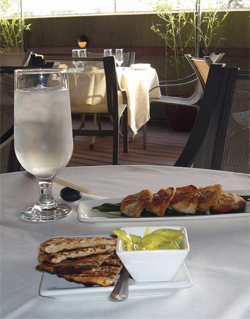
Chefs across our neighborhoods are reinterpreting dishes with ingredients from the Far East and beyond, giving Western food a shot in the arm.
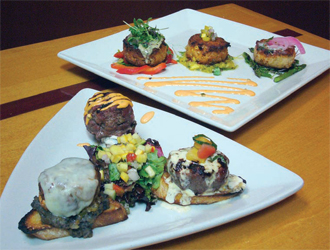
As operating partner and executive chef of Pangea in Shadyside, Ron DeLuca Jr. prefers to blend different culinary influences in the same kitchen. “Depending on what’s local and what’s fresh, I have Indian dishes, Thai, Chinese, French, American, Southwestern,” notes DeLuca, who fondly remembers making gnocchi with his Italian grandmother as a child.
The same is true at Pino’s Contemporary Italian in Point Breeze, where Italian-born chef and owner Joe Mico (aka Pino) tries to keep his menu fresh and current to appeal to the evolving tastes of his diners. What began as an unassuming pizzeria more than 15 years ago now offers tapas on Thursdays and entrees with Pan- Asian influences. “There will always be Italian roots in Joe’s food,” says Mico’s wife, Jennifer. “But he takes classic items and adds a contemporary twist.”

Joe Tambellini agrees. “The world is too small nowadays to do strictly Italian, so we venture off the beaten path,” says the owner and executive chef at Joseph Tambellini Restaurant in Highland Park. “I venture to Asian sometimes, just because I love that taste. I do a sesame calamari, often referred to as ‘General Joe’s.’ It’s just something I can’t get away from, because people ask for it so much.
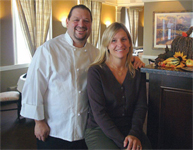
With fusion fare being so popular, it has even become more difficult to classify restaurants. When Silk Elephant opened in 2006, people couldn’t figure out what we were, says Eileen Nareedokmai, wife of Chef Nor. “Tapas was a new trend,” recalls Nor, who was born and raised in Thailand, where a traditional meal is called jaan leklek, meaning “plate, little, little.” “I thought ‘Hmmm.’ We have that in Thailand, too, not just in Spain!” he says.

Hawaii may not be a foreign country, but it’s certainly far enough away from Pittsburgh to qualify. After spending nearly 20 years living and working in five-star restaurants in the Aloha State, executive chef Eddie Myers is bringing the taste of the Hawaiian islands and Polynesia to The Hartwood Restaurant in Indiana Township, where he enlivens traditional American fare with flavors like coconut, ginger, banana, and curry. Hawaiian cuisine is a fusion of Asian and other influences that reflects the state’s melting pot of cultures. “Here Pacific Rim melts into the ‘burgh,” Myers says. “Sometimes I say, ‘Come and taste the world.’”
Tony Tongdee, the owner and chef at Sweet Basil and La Filipiniana on Murray Avenue, recommends combining Thai and Filipino food. “You can order one curry, one pad thai noodle, one chicken with spicy basil sauce, and one Filipino dish,” suggests Tongdee, who says Filipino food is on the mild side of Asian.

And so be it if a country has a singular signature dish. “My number one selling item on a daily basis is my jerk chicken,” says Jamaican-born Benhail Crownie, owner and chef at Royal Caribbean in East Liberty. “Nobody in the city does jerk like us,” he says. “And customers want it hot. We tried to tone it down, but people complain, complain, complain.”

While all of these dining options have created an insatiable taste for new culinary experiences, there will always be a need for the old standbys—food we know we can trust. So if it’s Chinese they want, then Chinese we’ve got. “Most of the customers eat the same food all the time,” says Amy Chen, who welcomes retirees every day to Jimmy Tsang’s for the early bird special. “If they like General Tso’s chicken, they eat General Tso’s chicken all the time,” Chen says. “Sometimes they try new food, and they say ‘Good, good, but I still like the old food.’”
That sentiment is echoed by Pipa Group president David Lamatrice, who opened Cioppino a year ago opposite the Cork Factory in the Strip District. The restaurant incorporates Tuscan-inspired dishes into a contemporary American cuisine. “We try not to do anything too elaborate,” Lamatrice says. “And I think it fits in well in Pittsburgh’s international dining scene.”
We certainly can’t seem to get enough Italian food here. “Pittsburgh has some wonderful ‘boutique’ Italian restaurants,” says Herman Tomer, founder of Enrico’s Ristorante in Shadyside. He describes area diners as “adventurous” and notes that he has seen a change in their dining habit during the six years he has been in business. “In the beginning, most people would go for a classic meat dish, considering pasta as a secondary item. Now more people are willing to go with the pasta side of our menu as their main course—which is a good thing!”

Tomer finds that diners have also become more adventurous with wine. “We’ve been so wonderfully surprised by the fact that they are willing to try Italian wines, even though they know nothing about them,” he says.
The growing local interest in wine is reflected in the names of some of our area’s newer restaurants, like Mio Kitchen Kitchen and Wine Bar in Aspinwall and Toast Kitchen & Wine Bar in Shadyside.
“When I moved here from Minneapolis in 1997, there wasn’t even a wine bar in Pittsburgh,” says Joe Jordan, the hands-on partner at Lucca Ristorante in Oakland, which specializes in northern Italian cuisine. “Here at Lucca we probably have 20 wines by the glass.”

There’s no wine on the menu—feel free to bring your own—but plenty of French food being served at the new Paris 66 bistro in East Liberty (see page 68). Just inhale the wafting scent of crepes being prepared there and ask Lori Rongier, who owns the restaurant with her husband, Frédéric, about their effect. “When he tried to seduce me with his crepes, I tried to say no, but eventually he got me,” she laughs. “We’ve now been married for 20 years and have four children.
French, Italian, Asian, Argentinean, Peruvian, Spanish, Belgian…the list of international dining options in our area goes on—strong evidence of the “melting pot” nature of our city. In the days ahead, as international delegations and the foreign press descend on Pittsburgh for the summit, let’s hope they eat up our city in every way, spreading the good word about all we have to offer.
And if the world’s economic leaders can take a break at some point to take advantage of some of our area’s fabulous dining options, who knows? Best case, they might fall in love like the Rongiers, or their fortune cookie may just presage better times to come: You will be traveling and coming into a fortune. Lucky number: 20.
With many thanks to SHADY AVE magazine for granting me permission to reprint on my website.


